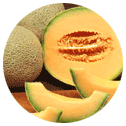 Full List of Fruits
Full List of Fruits  Kutjera fruit
Kutjera fruitKutjera fruit
Scientific name - Solanum centrale
Indigenous to the more torrefeid parts of Australia, Kutjera or Australian desert raisin with a scientific name of (Solanum centrale) has been used as a food source for millennia by Central Australian Aboriginal groups. The inclusion of two significant factors makes them popular for use in condiments and sauces. It is the strong and overpowering taste of tamarillo and caramel. After drought years, it has the capability to grow being quiescent as root stock. Featuring dry raisins, the fruits are 1–3 cm in diameter, when fully ripe they are yellow in color. This fast-growing shrub fruits fast the year subsequent to good rains.
![]() Nutritional Value of Kutjera fruit
Nutritional Value of Kutjera fruit
| Vitamins | value |
| Energy | 384kJ / 100gm |
| Protein | 1.6 gm / 100 gm |
| Fat | 0.6 gm / 100 gm |
| Carbohydrates | 21.0 gm / 100 gm |
| Fibre | 3.2 gm / 100 gm |
| Na | 4.66 µg |
| K | 2251 µg |
| Mg | 160.3 µg |
| Ca | 117.1µg |
| Fe | 26.5 µg |
| Zn | 1.850µg |
Instead of using it in the same form, grinding Kutjera is one of the easiest forms to cook with. Usage of this fruit gives out a distinct caramel/raisin flavor with a spicy and strong aftertaste. It is this factor that makes the fruit ideal for use as a crust on meat. When chopped into curries and salsas, they give out a great taste. They are used in salads and are highly helpful in dressing or bedding of any meat items.
Kutjera has been traditionally used by the indigenous people of Australia as a food source and for medicinal purposes. It has a long history of use for treating illnesses and wounds, as well as for providing nutrition. The fruit is rich in protein, carbohydrates, and essential vitamins and minerals, making it a valuable dietary supplement for those living in remote areas. It is also high in antioxidants, which can help reduce the risk of certain chronic diseases.
Kutjera can be eaten fresh or dried. The fresh fruit can be used in a variety of ways, such as in salads, as a snack, or added to other dishes. The dried fruit can also be used in a similar way, and is often added to cereals, oatmeal, and other baked goods.
Kutjera is also widely used to make jams, jellies, and other preserves. The fruit can also be used in beverages, such as wine and liqueurs, and can be used to flavor tea and other beverages.
Kutjera can also be used as a natural dye. The dried fruit can be soaked in water and used to color fabric and other materials. This dye has been used for centuries to color fabrics used for clothing and other items.
Kutjera is also used to make traditional medicines. The fruit has been used to treat a variety of illnesses, including headaches, colds, and digestive problems. It is also believed to have anti-inflammatory and antiseptic properties, which can help to reduce swelling and heal wounds.
During the late autumn and early winter, the dried up fruits are collected from the small bushes. It is good to keep full moist until germination. Rich in vitamin C, before the germination, this plant will require smoke treatment and it is nothing, but the simple process of covering the sown seed with smoked vermiculite and watering in. They are a rich source of minerals, especially potassium. After soil disturbance, the plant grows rapidly. Having a preference over loam/gravel soil, they are fast growing and hardy. It has high tolerant capacity towards dry conditions and likes full sun. Send up suckers over time, often the main plant will die back and the new shoots will pop up a short distance away. In the deserts of Central Australia, they are grown commercially these days by Aboriginal communities.
Kutjera propagation can be done in several ways, including sowing seed, taking cuttings, and layer propagation.
Sowing seed is the most common method used for propagating Kutjera, and it is relatively easy to do. The seeds should be planted in a well-drained, sandy soil, and they should be kept slightly moist. The seed should be planted approximately one-half inch deep, and the soil should be kept at a temperature of around 70-75 degrees F. After planting, the seeds should be kept in a warm, sunny location until they sprout.
Taking cuttings is also an effective way to propagate Kutjera. Cuttings should be taken from semi-mature stems that are about one to two years old. The cuttings should be about 4-6 inches long and should include a few leaves. Once the cuttings are taken, they should be placed in a shady, damp location until the roots develop. After the roots have developed, the cuttings should be planted in a well-draining potting mix.
Layer propagation is another method used to propagate Kutjera. This method involves taking a semi-mature stem and burying it in the soil. The stem should be buried approximately one-half inch deep, and the soil should be kept slightly moist. Once the roots have developed, the stem should be carefully dug up and replanted in a well-draining potting mix.
No matter which method of propagation is used, Kutjera plants should be planted in a sunny location and should be kept in a well-draining soil. The soil should be kept slightly moist, but it should not be soggy. The plants should also be watered regularly. After the plants are established, they should be pruned to promote healthy growth and to keep the plant from becoming too large.
Kutjera plants are easy to propagate, and they can provide a unique, flavorful addition to any garden. With the proper care and attention, they can thrive in a wide variety of climates and soil types. With their hardy nature, they are a great choice for those looking to add a native Australian fruit to their garden.


















